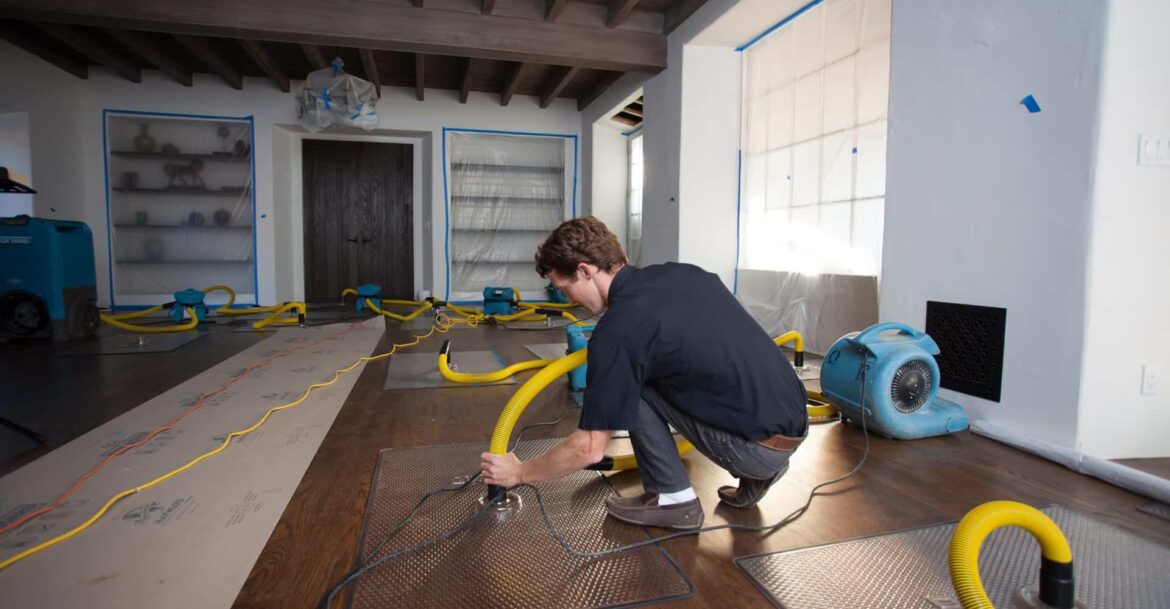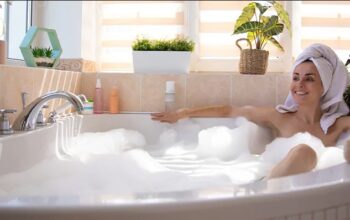Water damage can be a nightmare for homeowners, causing significant structural issues, fostering the growth of mold, and damaging personal belongings. To minimize the long-term impact, it’s crucial to swiftly and effectively restore the affected areas. In this article, we will delve into various strategies that will guide you through the process of overcoming home water damage, enabling you to restore your property to its pre-damage condition.
Assessing the Extent of Damage
- Conducting a thorough inspection: Begin by carefully examining your property to identify all areas affected by water damage. This includes inspecting walls, ceilings, floors, furniture, and personal belongings.
- Documenting the damage: Take photographs and detailed notes of the affected areas. This documentation will prove invaluable when filing insurance claims and working with water damage restoration professionals.
- Identifying potential safety hazards: Be cautious and look for any hazards such as structural instability, electrical issues, or contaminated water. Prioritize your safety and seek professional assistance if needed.
Safety First: Precautions during Restoration
- Turning off the main water supply: Shut off the main water valve to prevent further water damage and leaks.
- Ensuring proper ventilation: Open windows and use fans to improve airflow and assist in drying out the affected areas.
- Using protective gear: Wear gloves, goggles, and masks to protect yourself from contaminants and harmful substances. D. Checking for electrical hazards: Avoid contact with water-damaged electrical systems or appliances to prevent potential shocks. Consult with an electrician to ensure safety.
Dewatering and Drying
- Hiring professional water extraction services: Engage the expertise of professionals equipped with specialized equipment to extract water effectively.
- Utilizing pumps, vacuums, and dehumidifiers: Employ suitable tools to remove water from carpets, flooring, and other surfaces, while dehumidifiers help eliminate excess moisture from the air.
- Removing moisture from carpets, furniture, and other belongings: Lift and remove carpets, dry them thoroughly, and clean or replace damaged padding. Dry and clean furniture to prevent mould growth.
- Monitoring humidity levels: Continuously monitor humidity levels with a hygrometer, ensuring they remain within acceptable ranges to prevent mould growth.
Cleaning and Sanitizing
- Disinfecting affected areas: Use appropriate disinfectants to sanitize surfaces and minimize the risk of bacteria or pathogens.
- Treating surfaces for mould prevention: Apply mould-resistant treatments to walls, floors, and other affected surfaces to deter mould growth.
- Utilizing specialized cleaning agents: Employ recommended cleaning agents to remove stains, dirt, and residue caused by water damage.
- Ensuring proper ventilation during cleaning: Open windows, use fans, or run dehumidifiers to facilitate drying and improve air circulation during the cleaning process.
Addressing Structural Repairs
- Evaluating structural integrity: Engage the services of a professional to assess the extent of structural damage and determine necessary repairs.
- Repairing damaged walls, ceilings, and floors: Fix or replace compromised structural elements to restore the stability and aesthetics of your home.
- Checking for hidden water damage: Thoroughly inspect areas that may be hidden, such as behind walls or under flooring, to identify and address any hidden water damage.
- Consulting with professionals for complex repairs: Seek expert advice and assistance for intricate repairs that require specialized knowledge and skills.
Mould Prevention and Remediation
- Inspecting for mould growth: Conduct a comprehensive inspection to identify any signs of mould growth. Mould can cause health issues and further damage if not addressed promptly.
- Properly drying affected areas: Ensure thorough drying of the affected areas to prevent mould from proliferating. Use dehumidifiers, fans, and adequate ventilation to expedite the drying process.
- Using mould-resistant materials during restoration: When replacing damaged materials, opt for mould-resistant alternatives. These materials are designed to inhibit mould growth and reduce the likelihood of future mould issues.
- Seeking professional assistance for extensive mould problems: If you encounter widespread or persistent mould growth, it’s advisable to enlist the services of mould remediation professionals. They have the expertise and equipment to safely and effectively eliminate mould from your home.
Restoring Personal Belongings
- Assessing salvageable items: Evaluate your personal belongings to determine which ones can be salvaged and which ones are beyond repair. Items with sentimental or monetary value may require specialized restoration services.
- Cleaning and restoring furniture, clothing, and electronics: Employ appropriate cleaning techniques and treatments to restore damaged furniture, clothing, and electronics. Consult professionals for delicate or valuable items.
- Contacting specialized restoration services for valuable possessions: Valuable possessions such as artwork, antiques, or collectables may require the expertise of specialized restoration services. They possess the necessary knowledge and techniques to restore these items to their original condition.
Working with Insurance
- Documenting the damage for insurance claims: Provide your insurance company with comprehensive documentation, including photographs, notes, and any relevant receipts.This forms the evidentiary claim process.
- Understanding your insurance policy coverage: Familiarize yourself with the terms and coverage of your insurance policy. Be aware of deductibles, exclusions, and any specific requirements for water damage claims.
- Communicating effectively with the insurance company: Maintain open and clear communication with your insurance provider throughout the restoration process. Keep them informed of progress and any updates or changes.
- Seeking professional assistance for the claims process: If you encounter challenges or difficulties with the insurance claims process, consider seeking guidance from professionals, such as public adjusters or attorneys specializing in insurance claims.
Preventative Measures for Future Protection
- Regular maintenance of plumbing and appliances: Schedule regular inspections and maintenance for plumbing systems, water heaters, and other appliances to prevent leaks or malfunctions.
- Installing water detection and alarm systems: Install water detection devices and alarms in vulnerable areas, such as basements and near water-related appliances, to alert you to potential leaks or water issues.
- Insulating pipes in cold weather: Properly insulate exposed pipes during cold seasons to prevent freezing and subsequent pipe bursts.
- Conducting routine inspections for early detection of leaks: Regularly check for signs of leaks, such as water stains, musty odours, or dampness, and address them promptly to mitigate potential water damage.
Conclusion:
Overcoming home water damage requires a systematic approach, attention to detail, and, in some cases, professional expertise. By following the strategies outlined in this article, you can effectively restore your home and prevent long-term issues such as mould growth and structural damage. Prioritize your safety throughout the restoration process and seek professional help when necessary. Your house will be restored to its pre-damage condition, giving you comfort and peace of mind.



